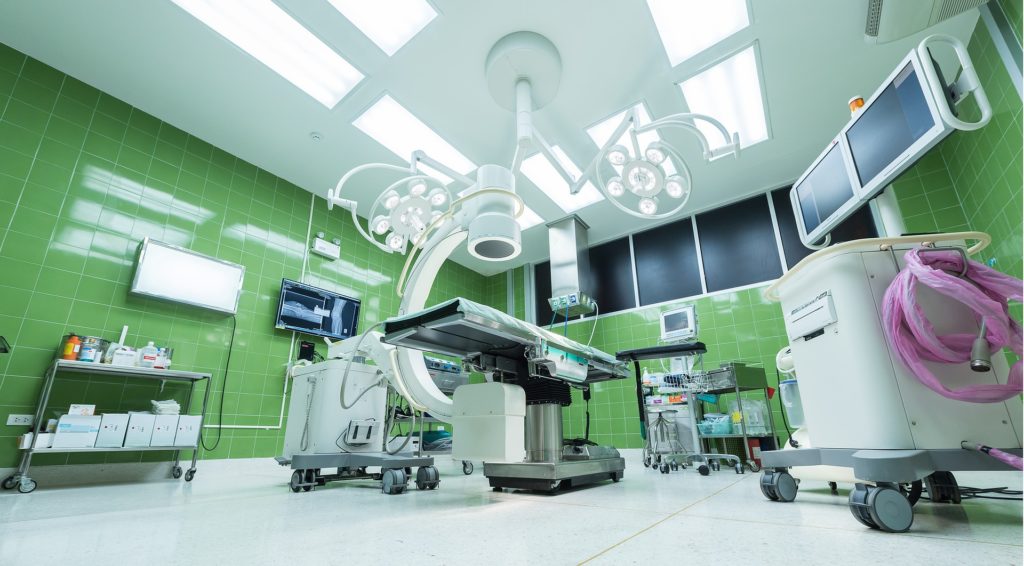Understanding Robotic-Assisted Surgery
- Posted
What is Robotic-Assisted Surgery?
Robotic-assisted surgery is a method of performing surgery using very small tools attached to a robotic arm. The surgeon controls the robotic arm with a computer.
How Does Robotic-Assisted Surgery Work?
You will be given general anaesthesia so that you are asleep and pain-free.
The surgeon sits at a computer station and directs the movements of a robot. Small tools are attached to the robot’s arms.
The surgeon makes small cuts to insert the instruments into your body.
A thin tube with a camera attached to the end of it (endoscope) allows the surgeon to view enlarged 3-D images of your body as the surgery is taking place.
The robot matches the doctor’s hand movements to perform the procedure using the tiny instruments.
Robotic-Assisted Surgery May Be Used for a Number of Different Procedures, Including:
Kidney removal; kidney transplant; coronary artery bypass; mitral valve repair; hip replacement; gallbladder removal; pyeloplasty; pyloroplasty; radical prostatectomy; radical cystectomy; tubal ligation and cutting away cancer tissue from sensitive parts of the body such as blood vessels, nerves, or important body organs.

The Benefits of Robotic-Assisted Surgery
It is minimally invasive. Surgeons don’t need to use their hands to access parts of the body that are hard to reach. Incisions are smaller than with conventional surgery.
Robotic-assisted surgery is less invasive and the risk of developing an infection is reduced, so you avoid the potential complications that come with infection.
You will recover more quickly and return to normal activities within several weeks after robotic-assisted surgery. As there is less trauma to the body, you will also experience less scarring as you recover.
There is less pain and blood loss due to smaller incisions and better precision. You will generally avoid the need for blood transfusions.
The Risks of Robotic-Assisted Surgery
Robotic-assisted surgery carries the same risks as open and laparoscopic surgery, including the potential for infection, bleeding, and the cardiopulmonary risk of anaesthesia.
However, there are additional risks that are unique to the robotic system. Not only is there potential for human error in operating the robotic technology, but an added risk of mechanical failure. Multiple components of the system can malfunction, including the camera, binocular lenses, robotic tower and robotic arms. The energy source can be prone to electric arcing which can cause sparks and burns leading to tissue damage which may not always be immediately recognised. There is a small risk of temporary, and even permanent, nerve palsies from the extreme body positioning needed to dock the robot during certain procedures.
Can Robotic-Assisted Surgery Result in Death?
In November 2015, a patient at a hospital died from multiple organ failure following heart surgery performed using a Da Vinci robot. During the surgery the robot damaged part of the patient’s heart, which ultimately resulted in organ failure and tragically the patient’s death.
An inquest took place to determine what went wrong. The Coroner concluded that the patient’s death was a “direct consequence of the operation and its complications”, and that the patient’s death was in part because “the operation was undertaken with robotic assistance.”
This case raises important questions about negligence, training policies and about the use of technology in healthcare in general.
Negligence
The inquest found that the surgeon could have done more dry-run training on the robot before the surgery. The robotics expert from Da Vinci was supposed to be present throughout the operation but left at the half way point. There is an absence of training on new technologies in healthcare. The medical director at this particular Trust issued an apology acknowledging that the Trust failed to ensure the standard of care that would reasonably be expected.
- The Trust breached their duty. The Trust failed to ensure the surgeon had undergone appropriate/sufficient training before proceeding to operate and by failing to ensure a representative from Da Vinci was present throughout the procedure.
- On the balance of probabilities, had the surgeon been trained appropriately and had the representatives been present throughout the operation there would have been no damage to the patient’s heart and they would not have suffered organ failure and later died.
Training Policies
NHS Trusts are responsible for the actions of their employees. In this case there was no training policy in place for the surgeon carrying out the robotic-assisted surgery.
The Royal College of Surgeons are now considering whether national guidelines should be introduced to regulate training and the use of robotic-assisted surgery.
Had the patient undergone ‘conventional’ open heart surgery then more likely than not the patient would have survived surgery.
If You Are Scheduled for Robotic-Assisted Surgery It May Be Useful to Ask the Following Questions:
-
What training has the surgeon had?
-
What is the hospitals policy on robotic assisted surgery and training for surgeons?
-
How many times has the surgeon carried out this robotic assisted operation?
-
Has this robotic assisted operation been carried out by anyone else at the Hospital/Trust/anywhere else in the Country?
-
Will there be someone from the technology company supervising the operation and will they be present for the entire time?
-
What are the benefit’s of using robotic-assisted surgery as opposed to ‘conventional’ surgery?
It is important to weigh the pros and cons of robotic surgery carefully.
If you think you may have suffered negligence during a robotic-assisted operation please do not hesitate to contact our Clinical Negligence Department on 01625 614250 and we will be more than happy to discuss matters with you.










